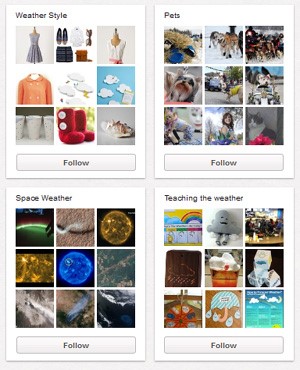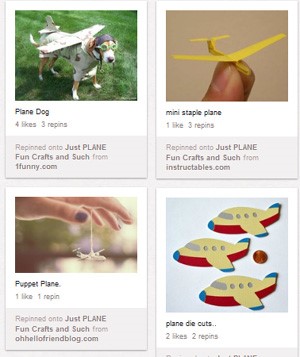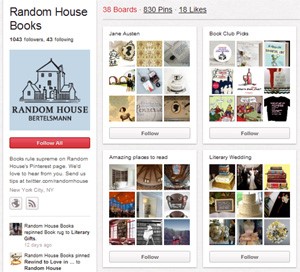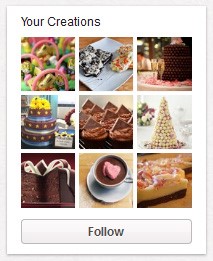Everywhere you turn at the moment there is another article about Pinterest. The image-sharing network only launched in March 2010, but by August 2011 it had already made it ontoTime Magazine’s ’50 Best Websites for 2011’ list. By February 2012 the site boasted 11 million visitors and, according to a study by Shareaholic, now drives more referral traffic than Google Plus, You Tube and LinkedIn combined.
But what is it, exactly? And how will it help my brand?
The concept is very simple: Pinterest users organize images they like in themed Pinboards. Other users can share (Repin) images, as well as like or comment on them, or follow individual boards or other users’ profiles. You can keep adding new Pinboards and make them as specific as you like. The network currently has a higher female demographic and is heavily weighted towards lifestyle, fashion and home-based interests, although this is likely to change as a wider range of brands and users become interested in its potential.
It is important to realize that Pinterest was not designed as a marketplace or as a product showcase. Brands who have tried to use it as such have not engaged with fans or built a following. The tips below show how brands who have understood how Pinterest can complement their own vision have been able to attract an audience, even if they don’t fall into the standard Pinterest demographic.
1/ No hard selling, this is about presence and individuality
Pinterest is driven by individual tastes, and brands’ activity should reflect that. People come to Pinterest to share and celebrate what inspires them, and the ‘hard sell’ is out of place in this sort of environment. Instead, brands should identify what makes them unique and the qualities that connect them to their customers. Craft store chain Jo-Ann have an advantage that they exactly fit Pinterest’s core demographic, but they also know how to appeal to their customers’ creativity. They look further than their own product lines with boards such as ‘Foodcrafting’, ‘Becoming a Disney Princess’, and ‘It’s Time’, a whimsical collection of clock images.

2/ Incorporate the PinIt button on your website
If you have an e-commerce site, make it easy for fans to Pin your content by adding a PinIt button directly onto the page. This has the added advantage that users will be less likely to use Google Images to Pin your products, which means potential customers will come directly to your website. Small business marketplace Etsy have built the PinIt button into their site: as a storefront for thousands of small businesses and crafters, it is vital to their model that potential customers can find their way back to the source.

3/ Giving a gift
There is a place on Pinterest for product promotion, and that is in the Gift section, rather than through your profile. When you upload a Pin you simply tag it with a price and description and it will automatically appear on the Gifts page. If users follow the link, it will take them back to your website sales page. It is still recommended that you share plenty of other people’s content too, rather than only Pinning your own products.
4/ Update your content regularly
Pinterest has a very current format: popular images often reflect seasonal trends or events, such as holidays, Valentine’s Day or movie releases. The Weather Channel are great at this: as well as the usual season-related Pinboards you might expect, they also have ‘Weather Style’, weather-related recipes, ‘Weather Pets’, and weather education themed boards.

5/ Re-pin from others
Sharing content is central to how Pinterest works. People can follow your whole page or one of your boards, and they are far more likely to find you if you are actively sharing other people’s content. It also helps to keep your content fresh, which shows you have interests beyond your own brand. Rather than focusing on their own products (which don’t translate well to Pinterest’s model), airline company Southwest prefer to highlight their reputation for fun and humor: they have Pinboards on plane-related crafts, ‘Plane Party Ideas’, ‘Travel Style’ and images of vintage travel, the vast majority of which are re-pinned from other users. Their popularity on Pinterest comes from getting behind the network’s ethos, despite not being the typical brand profile for the site.

6/ Think about what your brand represents
Getting started on Pinterest is a great opportunity to think outside your traditional product lines or marketing approach. What themes sum up your brand, and how do these connect with your customers? Random House Publishing keep their own product marketing to a minimum and instead focus on wider literary interests. They have boards for ‘Literary Weddings’, ‘Literary Tattoos’, ‘Amazing Places to Read’, and ‘Literary Gifts’, all things that appeal to the literary-minded user.

7/ Celebrate your fans
Pinterest can give your brand a platform for reaching out to your customers and making the experience as much about them as it is about you. Lindt have a board for ‘Your Creations’, showcasing chocolate creations made from Lindt, while BedandBreakfast.com feature travel tips their followers have sent in from around the world.

Originally published on TheNextWeb

